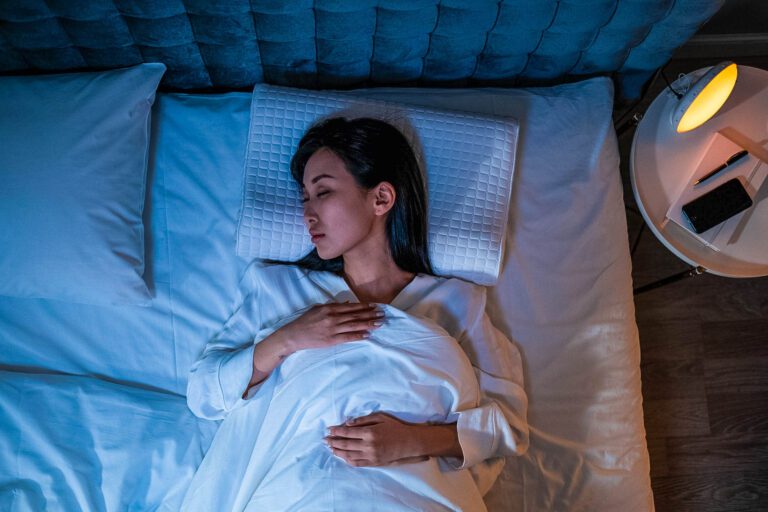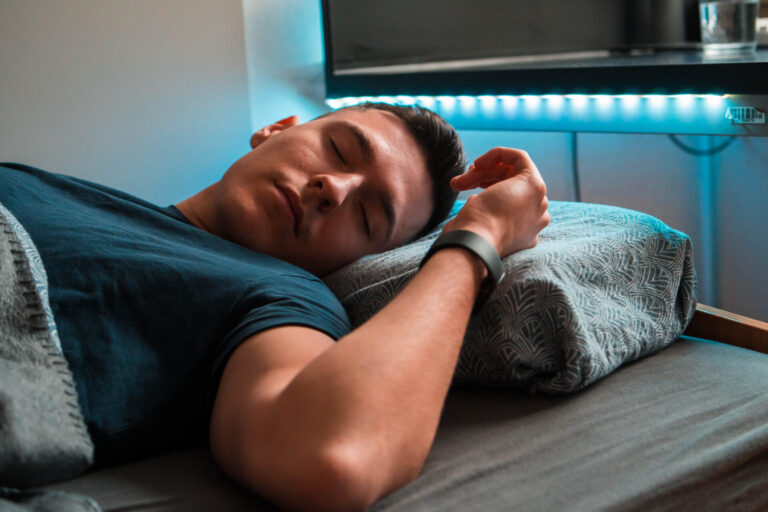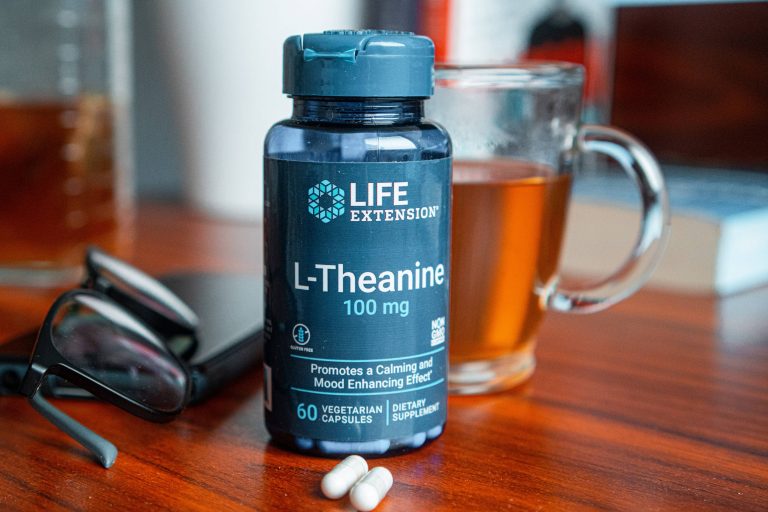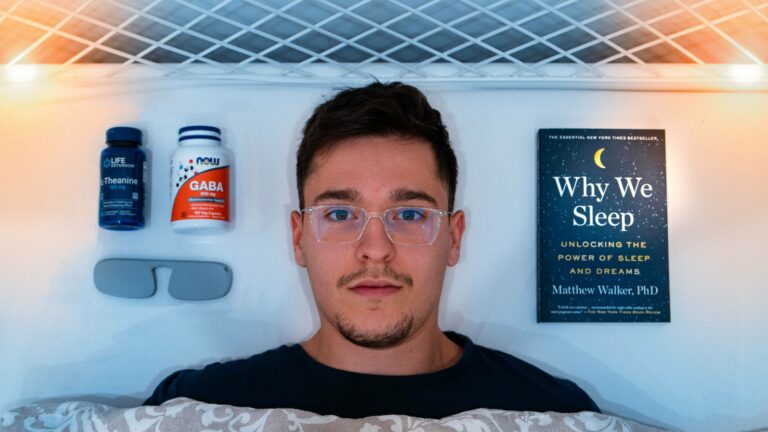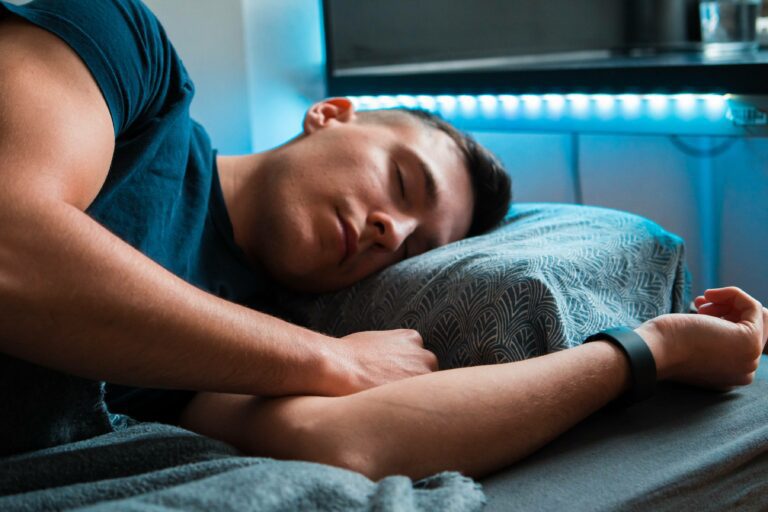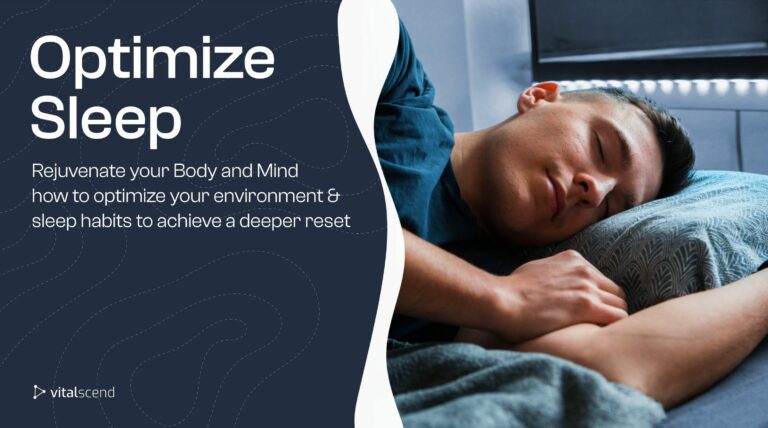Sleep and Blue Light – Benefits of Blue Light Glasses
There’s an interesting dance between sleep and light exposure. The shorter the wavelength, the more intense the light is, and the less sleepy we are. It seems that blue light can kickstart our internal clock, but also disrupt our sleep hormones, so what’s true? Buckle up for the benefits of blue light glasses.
Manipulating light exposure heavily impacts our sleep and wakefulness phases. Short lights like blue, white, and violet make us awake, alert, and focus. Lights at longer wavelengths are less intense – think yellow, orange, and red lights which promote relaxation.
We have all heard we shouldn’t look at screens at night. Why? Because it fights the most regenerative natural process in the body – sleep. It controls metabolism, energy, hormones, etc.
How to block blue light and the science behind blue blockers’ benefits are our two main topics today. Buckle up, grab a cup of coffee, and let’s dive in.
What is Blue Light?
Blue light is light with a spectrum of shorter wavelength, somewhere around 450 to 500 nanometers. It is mainly emitted by LED light bulbs and screen devices like your phone, tablet, or computer.
See, there’s an optical spectrum containing lights that have certain wavelengths. Some of them are too short, like x-rays and ultraviolet light, while others are too long like radar and radio waves. We can’t see them.
Blue Light
Blue light sits somewhere in the middle, at 450-500 (495) nm, https://scied.ucar.edu/image/wavelength-blue-and-red-light. surrounded by violet light below 450 nm and Yellow light over 570 nm. It’s the one we see most during the day, being also emitted by the sun. Contrary to popular beliefs, blue light isn’t all that blue. It’s the white-looking artificial light you see emitted from your devices.
Shorter Wavelength Lights
The shorter the wavelength of light – the more stimulatory it is. So much so, that the shortest lights like Gamma-rays, X-rays, or UVs light are detrimental to humans. They are very strong, penetrating deep into our skin.
Longer Wavelength Lights
The longer the wavelength, the more relaxing – or less stimulatory the light is. This is why exposure to a red or infrared one (think sauna) can improve sleep quality. (1) That’s why at night, dimming the blue light down to the orange or red spectrum of light can be beneficial.
Conclusion
Blue light is light with a wavelength of 450-500 nm having a stimulatory effect. It sits somewhere in the middle of our optical spectrum, being very important for internal clock regulation. Shorter lights are more stimulatory, while longer lights are less effective at it, helping us relax.
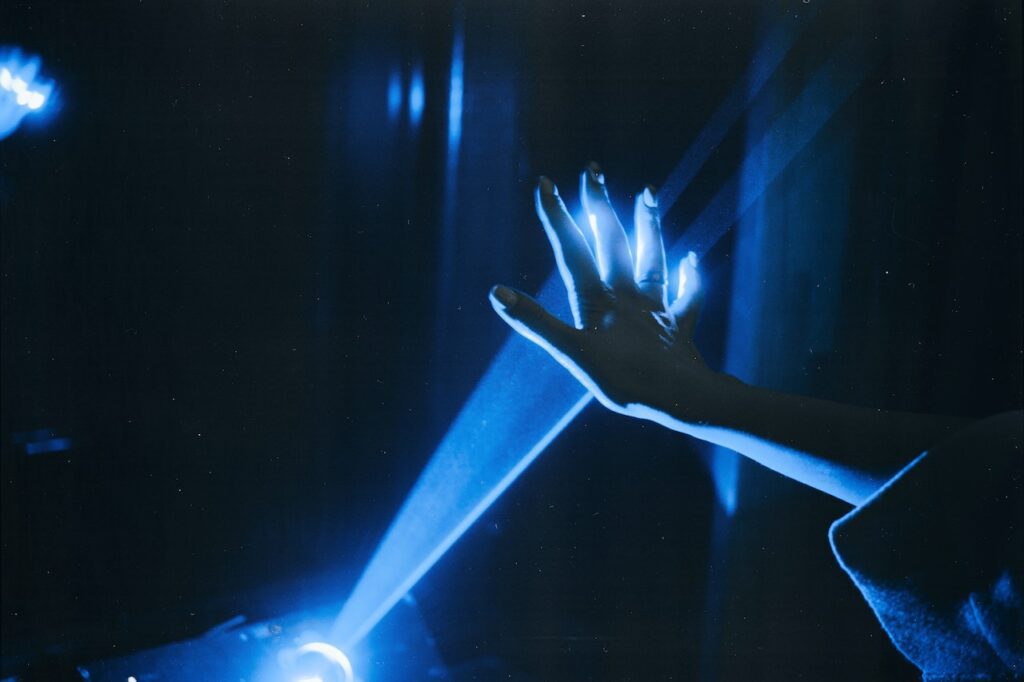
The Effects of Blue Light Exposure
We can’t completely block blue light, nor should we. Blue light is important as it provides many stimulatory effects like increasing alertness and focus. It’s extremely important for regulating our circadian rhythm. In some cases, can be detrimental depending on the time we’re exposed to it.
In fact, Blue Light exposure in the morning can tremendously improve our sleep quality. Whether done by blue-emitting glasses (not blocking), looking at a screen device, or the best one – going out for a walk on a sunny day, it absolutely wakes you up.
The Good
Exposure to blue light can have many positive effects on increasing focus and alertness. It shortens reaction time and improves cognitive processing. Activating the noradrenergic system is making us more awake and alert. (2) (3) (4) (5)
It was also shown that blue light can improve memory consolidation, which is logical as it helps us learn, and function at a higher level. (5)
The ability of blue light to kickstart our internal clock translates into a more regular, better-controlled sleep-wake cycle pattern. In the morning, we want blue light to wake us up – because that’s the contrast we need to be tired and fall asleep at night.
Fun Fact
Blue light is the most effective wavelength of light that affects our circadian rhythm. If used properly, it’s a powerful tool to reset the internal clock by manipulating sleep-wake hormones.
It seems contradictory since blue light increases cortisol levels and suppresses melatonin secretion. (6) Yes, that’s a stimulatory effect we actually want during the morning so we can cognitively function at our best.
The Bad
This brings us to the dark side of blue light. See, humans slept more throughout history. When the sun came up, they were up and when it went down, it was time to relax and sleep. But nowadays all these electronic devices mess with our internal clock, thus disrupting sleep.
Evening exposure to blue light has been shown delay sleep as it reduces slow-wave sleep in the first sleep cycle, compensating by increasing it in the third cycle. Plus, it significantly reduced REM sleep. (7)
Numerous studies, both epidemiological and prospective with large sample sizes show artificial light exposure can increase the risk of obesity, cardiovascular diseases, hypertension, and even some types of cancer. (8) (9) (10)
Pro Tip
To get all the benefits from both exposure to and blocking of blue light, we need to time it correctly. Exposure to light in the morning makes us more alert and focused, but at night it’s a great practice to block it, as it disrupts sleep.
Quality Sleep on Health
You may ask, but why is sleep so important? That’s a whole different topic, but a quick answer would be, it supports a myriad of physiological functions in the body.
Sleep is the natural regenerative process that helps us repair tissues, clean up junk, restore energy, and balance hormones. It’s during sleep that we consolidate memory, refresh our brains, and regenerate. (11) (12)
Fun Fact
Generally, it is recommended that 8 hours is the optimal sleeping window. The National Sleep Foundation recommends 7 to 9 hours of sleep for young adults and adults and 7 to 8 hours of sleep for older adults. (13)
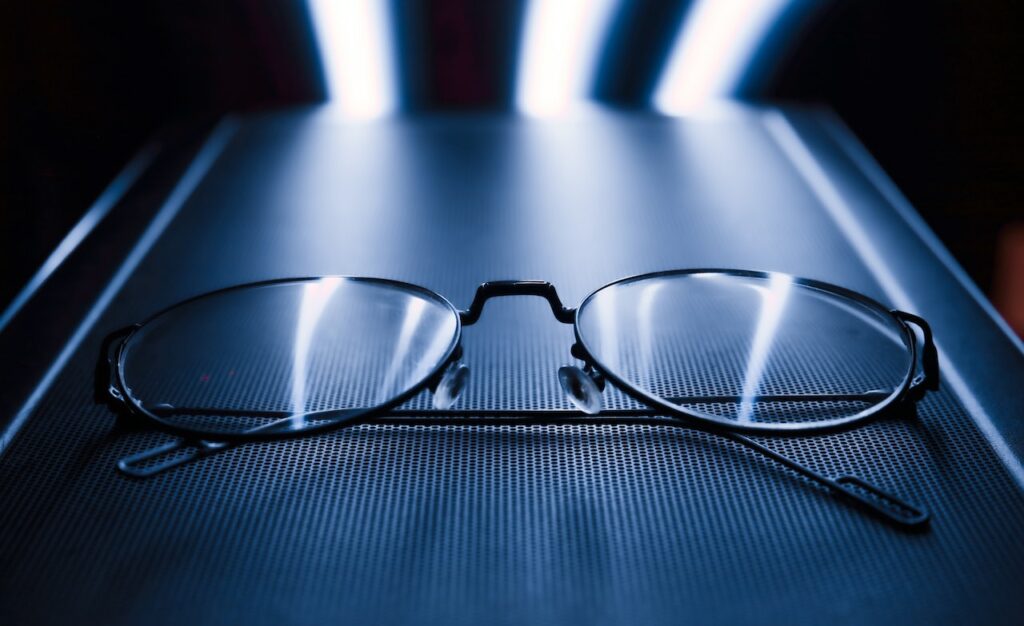
Cons of Sleep Deprivation
Since sleep is essential for your biological functions, insufficiency of sleep can lead to numerous health issues.
Sleep-deprived people may be at a higher risk to gain more weight. This deteriorates glycemic control, meaning higher insulin resistance risk, diabetes, and obesity. Combine that with cardiovascular dysfunction, higher inflammation, and blood pressure – you’ve got a recipe for disease. (14) (15) (16)
In terms of brain performance, sleep disorders are associated with poor cognition and memory, weaker performance, mood swings, and even neurodegeneration. (17) (18) (19)
Pro Tip
Poor sleep or sleep deprivation can increase the risk of different metabolic diseases. It can impair our ability to utilize glucose, process and memorize information and fight inflammation.
Circadian Rhythm and Melatonin
Our internal clock isn’t just a hypothetical thing, it actually exists. It is usually calibrated at 24 (or 24.2) hours on a daily basis. It’s the suprachiasmatic nuclei in the hypothalamus that helps regulate these physiological rhythms and functions. (20)
Exposure to dark is essential for the production of melatonin – the main hormone that regulates our sleep-wake cycle. We naturally produce it from the pineal gland which helps us relax, sleep deeper and regenerate better. (21)
Blue light exposure stimulates the ipRGCs (light receptors) causing the release of melanopsin. This further suppresses melatonin, disrupting our sleep. (22) This is what happens when we stare at our devices, read a book on our tablets, or scroll through social media.
Suppressing or blocking blue light can ameliorate, or ease (reduce) the detrimental metabolic effects of disrupted sleep. As shown in mice, it improved glucose and insulin levels, and sleep quality. (24) (25)
One study showed adolescents exposed to blue light emitting devices 1 or 2 hours prior to bedtime suppressed melatonin by a whopping 23% and 38%, respectively. (23)
Sleep and Blue Light
Exposure to shorter wavelengths of light, like blue light, that’s emitted from electronic devices, can make us more alert, and focused and disrupt our sleep. One of our top ways to optimize sleep is blocking blue light because of that.
There are these special receptors in the eye sensitive to light, called the intrinsically photosensitive retinal ganglion cells or ipRGCs. Once light penetrates in, it stimulates these receptors, signaling daytime. (26) That’s how light exerts its effects on sleep and affects metabolism, wakefulness, and cognition.
Pro Tip
It’s essential to dim the lights down in the evening, or just use longer wavelength lights, like yellowish, orange tone, or even red light. You can even put blue light blockers or protectors on your screen or invest in a good set of glasses.
The Benefits of Blue Light Blocking Glasses
While not every cheap amber-shade glasses can step up your sleep, high-quality ones definitely can. If you’re not sure by now why would you need blue blockers – we’ll check some scientific data.
Numerous studies show the potential of amber-shade glasses to improve sleep quality, mood, and duration. (27) (28)
Wearing blue blockers can reduce the time it takes to fall asleep, or in scientific terms sleep onset latency. Especially beneficial for those with variable work schedules, sleep disorders, or traveling enthusiasts. (28)
The mechanism behind it is reducing the suppression of melatonin (caused by blue light). In 14 subjects experimenting with orange glasses, melatonin was increased by 6% (non-significant) while in the grey lens group (control), melatonin dropped by 46%. (29)
Staring at a screen device may cause eye fatigue (strain) and dryness. Such conditions may accelerate AMD or age-related macular degeneration, hence why blue blockers may help. (30) It’s worth noting that blue light isn’t the main factor contributing to AMD, but aging is.
In 21 subjects wearing blue blockers exerted many sleep-enhancing benefits. Potentially, this effect took place due to a lower stimulation of the light-sensitive receptors in our eyes. The results were: (31)
- improved subjective measures of sleep quality
- improved melatonin levels
- longer (improved) sleep duration
Pro Tip
Wearing blue-blocking glasses at night, a few hours prior to bedtime can improve sleep quality, time to fall asleep, and even mood. Pop on those blue blockers a few hours before bed (I do mine at 6 o’clock) to prevent melatonin suppression by artificial lights at night.
How to Block Blue Light
A few extra tips never hurt anyone, right? Our list of blocking blue light extends beyond just wearing blue blockers, but of course, they’re the most effective way to do it in such a tech-developed world.
To not look at screens at night is a great idea, but probably not what most people will do, or be happy about. If possible, it’s optimal to stop using light-emitting devices like phones, tablets, and monitors 3 hours prior to bedtime.
To go out for a walk, prepare yourself some chamomile tea, play some ping-pong with your partner, get a massage, and hit a 10-minute infrared sauna session would be optimal. But not all of us are eager biohackers, so let’s hop onto our more realistic list:
- wear high-quality blue-blocking glasses at night, especially when looking at screens
- automatically set all screens to night mode – to dim down to a yellowish-amber tone at 7-9 o’clock
- If you watch movies prior to bed, use a projector on a wall (so you don’t stare at a screen) or watch in on a screen with a blue light screen protector (panel on top)
- invest in dimmable lights that provide longer wavelengths and more natural light like orange, amber, and yellow light.
- invest in red light emitting bulbs – not just by looks but by actual wavelength, and turn them on at night. Set up a system that disconnects all other (white, blue) lights at night.
- If you really want to squeeze the last 2% benefits, but still want to look at screens maybe wear red shade glasses that block a large spectrum of lights. (caution, these will make you sleepy and are intended to do so, don’t wear them during the day)
Conclusion
- Blue light is light with a shorter wavelength between 450-500 nm, emitted mainly by the sun, tech devices (phones, tablets, monitors), and LED light bulbs.
- Blue light exposure can increase alertness and focus, promoting a wakefulness effect. This is good in the morning but disrupts your sleep at night as it suppresses melatonin, thus reducing sleep quality.
- Our body has an internal clock that controls the sleep-wake cycle, mainly manipulated by light exposure. The sleepier we need to be at night, the less we should expose our eyes to blue (short) light.
- Sleep is a natural regenerative process controlling many physiological functions. Disrupting sleep causes detrimental changes to metabolic, cardiovascular, and neurological health.
- Wearing blue-blocking glasses, especially a few hours prior to bed can improve sleep quality, sleep onset latency, and mood, thus improving health.
- An extra tip would be to buy dimmable, natural light bulbs emitting yellow-orange light and to turn all lights off an hour prior to bedtime while using only red light-emitting bulbs.


